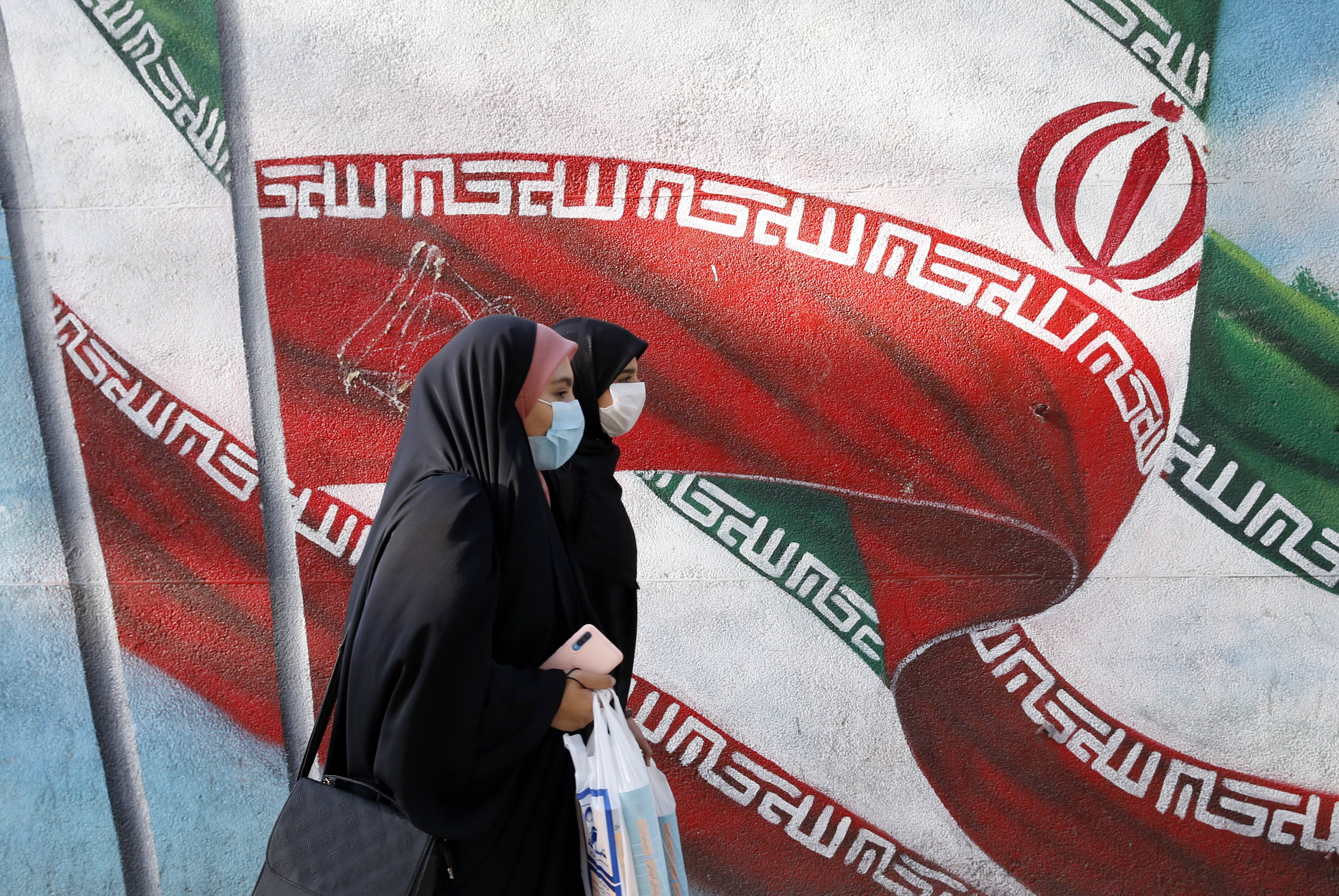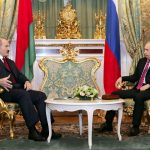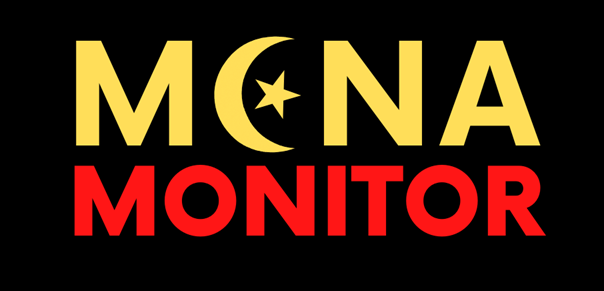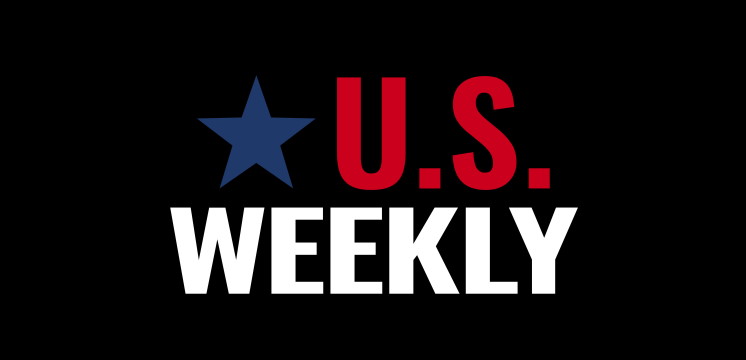THE WARSAW INSTITUTE REVIEW
Date: 29 October 2020
Will the “maximum pressure” campaign force Iran to negotiate with the US?
The combination of the effects of American sanctions, the oil market crash, and the COVID-19 pandemic, has put the Iranian economy in a challenging situation. The country‘s economic situation is now under the government’s control. However, it may deteriorate further if the plans of the authorities to finance the state budget fail. The forecasts indicate that the budget deficit will be greater than initially assumed. Although the economy is not the only factor influencing the attitude of the Iranian people, the worsening economic conditions, according to many experts, are increasing the chances for talks with the West in the medium-term perspective. But is this enough to convince or, de facto, force Tehran to take a seat at the negotiating table?

Author: Marcin Krzyżanowski
Introduction
The official goal of the US sanctions is to force Tehran to discuss Iran’s regional policy, ballistic missile development program, and nuclear program. The sanctions are intended to lead to an economic crisis that will force Iran, which is threatened with bankruptcy, to negotiate. Another vision, in which the fatigue of the crisis and the poverty of the Iranian people lead to “regime change” is also popular among commentators from across the ocean. Did two years of sanctions soften the Iranian authorities or radicalize society? The strategy of the United States has limited Iran’s access to the global banking system almost to zero and has severely limited Iranian oil exports. Iran plunged into recession, inflation rose to about 30% in 2019[1], the currency market trembled, and the rial recorded a record fall in value. The economic pressure exacerbated the negative effects of the uncontrolled social programs, errors in investment project management, corruption, and short-sighted budget planning.
However, one year after the reinstatement of sanctions, the Iranian economy began to show signs of stabilization. The consistent and well-coordinated monetary policy of the government and the central bank, Bank-e Markazi-ye Iran (BMI), has brought the value of the rial under control, and oil exports have stabilized at around 300,000–500,000 BPD. Iranian politicians and traders focused their attention on neighboring countries, rightly stating that cross-border trade with Afghanistan, Iraq, and Turkey will be very difficult for the US to control and block. The economy did not emerge from stagflation, but, by the end of 2019, Iranian leaders had real reasons to believe that they had a serious chance of resisting US pressure and getting the country out of the crisis. However, this optimism did not last long. The coronavirus pandemic that erupted at the beginning of 2020 struck a serious blow against the regime, and its effects are felt more in Iran than the consequences of American sanctions[2]. The US had been unable to force Iran’s neighbors to close their borders to goods imported from Iran, but this turned out to be a side effect of the pandemic. When Afghanistan, Iraq, Turkey, and other Iranian neighbors took drastic public health precautions and closed borders, Iranian companies stopped delivering convertible currency to the domestic market overnight. This limited the government’s access to foreign exchange and caused a shock in the domestic currency market. It also resulted in significant funds being spent on aid packages for companies and individuals affected by the pandemic’s economic consequences.
At the beginning of the Iranian fiscal year (March 2020), the Rouhani administration implemented an aid package worth about 6% of GDP[3]. Importantly, the value of the Iranian aid program in relation to GDP is slightly higher than the average for developing countries (5.4%), but lower than the programs implemented, e.g. in Thailand, India, or even Poland (about 10%). However, it does not differ from the average for the Middle East (6.1%)[4]. In financial terms, the government was not able and did not want to do more. Among other things, the adoption of such a policy consisted of the limited possibilities of a sanctioned economy, as well as the priority for other expenditures. At the height of the pandemic, Tehran increased military spending by 9% year-on-year, inflation included. A large part of the additional funds was transferred to the Islamic Revolutionary Guard Corps (Sepah)[5]. Iran has also not reduced its support for its allies in Syria, Iraq, Lebanon, and Yemen[6]. This, together with the general rhetoric of Iranian politicians headed by the rahbar (‘supreme leader’ – translator’s note)Khamenei, is definitely not a signal of a softening of Iran’s position on potential negotiations. On the contrary, it is a sign of a willingness to maintain the current regional and domestic policy course.

“Resistance Budget”
This year’s budget was the first one since the start of the “maximum pressure” campaign in May 2019. It was preceded by a year of sanctions, which brought oil exports – Iran’s most important source of revenue – down to less than 500,000 BPD, an 80% decrease on the previous year[7]. The big challenge for President Rouhani was to present a draft budget with significantly reduced revenues from oil sales while maintaining the social spending expected by the poorer Iranians, and the defense spending required by the military and the rahbar.
Despite the crisis, the budget was not adopted easily. On February 24, Parliament rejected the budget law by 67 votes in support and 114 against (in the absence of nearly one hundred MPs)[8]. In response, the President of the Parliament Ali Larijani asked for the intervention of Ayatollah Khamenei. On March 3, the supreme leader issued a decree allowing for the adoption of the budget without parliamentary approval. The budget (after quite significant number of amendments introduced under pressure from Sepah) was officially adopted on March 19. The supreme leader’s formal intervention was something quite unusual, which emphasized both the erosion of the role of the Parliament in the Islamic Republic and the extraordinary conditions imposed by the COVID-19 pandemic.
The budget originally assumed government spending of 5,638 quadrillion[9] IRR (5,638,000,000,000,000) or about 43 billion USD – according to the free market rate. This meant an increase of 8% compared to the previous budget. However, after taking inflation into account, expenses were to decrease by about 17%. The updated budget increases planned expenses by 15% to 6,498 quadrillion IRR. This includes a planned increase in civil servants’ salaries (inflation not included), as well as a 25% increase in expenses on development projects and investments. Moreover, the revised budget increases spending on defense and police.
With oil revenues limited by sanctions and reluctance/impossibility to raise taxes, Tehran focuses on raising money from its privatization program, bond issue, and capital market, the main center of which is the Tehran Stock Exchange (TSE). The state still dominates the Iranian economy, so the potential resources for privatization are substantial. As a result, TSE became[10] the world’s most successful stock exchange in 2019. Given the possibility of overheating the stock market (TSE) and the creation of a speculative bubble, the government, on the one hand, is reaping huge profits from the privatization and, on the other hand, is carrying it out carefully and in stages.
Furthermore, the government tries to cover the deficit by issuing bonds, burdening itself with long-term debt. Given the drastic decline in public confidence in the state and the excellent TSE results, it is not surprising that there are relatively few individual bond buyers. The main group of clients is banks – usually state-owned. BMI supports the purchase of bonds through loans to banks by creating additional money. This, in turn, strengthens the inflationary pressure but, at the same time, does not translate into the need to print the rial. Therefore, inflation does not get out of BMI’s control, but its amount gives cause for moderate concern.
The budget assumptions concerning tax revenues are also problematic. The government plans to increase the annual tax revenue by 13%, to the level of 1,950 quadrillion IRR (about 11 billion or 45 billion USD, depending on the conversion rate). The plan will be implemented in a situation of an almost certain decline in corporate turnover and personal income without introducing new taxes or increasing the ones already in place. In addition, the budget continues to grant tax exemptions to religious foundations and organizations, so-called bonyads, which, depending on their sources, control from 15 to 50% of the economy. In October 2019, the national tax authority announced that nearly half of the highest-earning individuals as well as organizations are exempt from taxes[11]. The government will try to limit tax exemptions and control the tax collection system, but it may encounter strong resistance from Sepah-relatedand influential circles around the rahbar. A similar situation occurred with respect to the planned social spending reform. In this case, however, the president managed to enforce changes in the social welfare system and reduce the number of its beneficiaries.
As presented above, Tehran finances its expenditures from three main sources: exports (primarily oil and petrochemicals), tax revenues, and privatization/bond issues. Each of these three pillars rests on shaky ground. However, the ambitious budget plan has so far been implemented to such an extent that it can be said that Iran will manage to end the Iranian year 1399 (March 2020–February 2021) with a large but controlled deficit.

Social impact of sanctions and the crisis
The Iranian authorities fully control the situation and social tensions, although the number of people dissatisfied with the situation in the country is steadily increasing. However, the idea of an Islamic republic, embodied by the rahbar Ayatollah Khamenei, enjoys significant social support, usually motivated by religion. Iranian society is strongly and profoundly divided. The Islamic Republic has both its sworn enemies and fanatical supporters. However, the fall in GDP, high inflation, rising prices, the decline in the purchasing power of the rial, and especially the human tragedies hidden behind the term ‘increased poverty rate’ have put a strain on relations between the state and its citizens, as reflected, for example, in the so-called fuel protests of November 2019. More and more Iranians regard their country’s economic situation as bad and with a tendency to deteriorate. Ordinary people are not interested in complex economic analyses, which show that the economy is not in such a bad condition on a macroscale. They focus on issues that are observable and directly affect them, especially rising food prices and high youth unemployment. The majority (about 50–60%) of Iranians claim that bad governance and corruption have a greater negative impact on the economy than foreign sanctions. A large part (30–35%) of the population considers the so-called nuclear agreement (Joint Comprehensive Plan of Action, JCPOA) a failure and blames both the government and the US for the worsening economic situation. Disappointment with the economy is one of the main reasons, apart from the veto of many prominent non-radical candidates, for the low turnout in the February parliamentary elections and the defeat of the camp of centrists/modernists. The majority of Iranians see no point in possible negotiations with the USA, justifying this by the Washington’s violation of the nuclear agreement. In turn, support for the concept of economic self-sufficiency and the so-called economy of resistance is growing[12].
Iranian clergy, including the rahbar, systematically uses an important quotation of the founder of the Islamic Republic. In his speech during a meeting with Iranian students in November 1980, Khomeini said: “We did not shed our blood [in the struggle against the Shah regime] for the cheaper watermelons.”[13] From mid-2018 onwards, government propaganda relatively often evoked this quotation, pointing to the spiritual values of the revolution and the futility of worldly life. A large part of the population fully supports the actions of the regime and is openly attached to the idea of an Islamic republic. This is particularly true of the Iranian province and the rural population, who, thanks to government subsidies, have not experienced a deterioration of economic situation as severely as the urban middle class. The great support the republic enjoys has its roots in the religious legitimacy of the state and the social reforms carried out after the revolution. Access to transport infrastructure, electricity, hot water, and medical care in the rural areas is incomparably greater than during the times of the empire. In the 1970s, for example, resources flowed much faster to more privileged urban districts. Between 1973 and 1975, when Iran made huge profits from oil exports, access to water supply in urban areas increased from 65 to 80%, while growth in rural areas amounted to less than 1%, from 7.6 to 8.5%[14].
The crisis is most challenging for the middle class and metropolitan areas. This is reflected in the regularity of protests, which take place almost every month[15]. They are hardly visible outside Iran, as they are usually local (communal or provincial) and led by different professions (e.g. demonstrations by teachers in Tehran, protests by farmers in Isfahan, and a strike by drivers in Tabriz, which took place in August, September, and October 2019, respectively). Importantly, the demonstrations have so far been about economic issues. The national protests have been erupting almost every year. However, back then they concerned only economic issues (which was visible, for instance, in the 2018 protests or the 2019 fuel protests). Only after some time, and only when the level of frustration of the protesters correlated with the increase in the brutality of law enforcement, some shouts hostile to the rahbar and the republicstarted to be heard. What is important, however, is that the shouts are not postulates but only slogans. The opposition does not exist in an organized form, and there is a lack of notable leaders of the parts of society opposing the republic. The regime is perfectly capable of suppressing the foundations of the organized opposition and skillfully isolating prospective leaders of any potential civil movements.
The regime took steps to improve the capabilities of police and other security forces in the aftermath of the 2009 protests. Protesters from that period were, for example, able to use social media to communicate, organize themselves, and criticize the regime. After the suppression of the so-called Green Movement, the Iranian government thoroughly examined the protesters’ methods. In 2011, it established the Cyber Police, Polis-e Faza-ye Towlid va Tabadol-e Ettelaat (FATA). The new unit aims to monitor internet content, investigate cybercrimes such as fraud and privacy violations, as well as monitor internet activists. The effectiveness of its operation became apparent during the fuel protests when it turned out that by invading instant messengers, the security forces were able to isolate the most active citizens and imprison them. What turned out to be a big surprise and an issue of crucial importance was the information that the authorities have the ability to quickly and completely cut the country off from the global Internet.
While the protesters after the 2009 elections came mainly from the city’s middle class, the foundation of the recent fuel protests, as well as the December 2017 protests, were mainly low-income lower classes and unemployed youth living on the outskirts of cities. This is very dangerous for the Iranian establishment, as these groups have little to lose and see no chance to improve their lives in terms of employment and prosperity. However, the lack of solid leadership among the protesters, no potential alternative to the current system, or a strategic goal, as well as the fear of civil war, complete collapse of the infrastructure, the use of extreme force, and the range of methods used by the establishment to suppress the protests, do not currently give any prospects for regime change.
Military expenditure
Iran’s military spending between 1994 and 2018 peaked in 2006, after which it fell by 30% between 2006 and 2014. The fall was the greatest in 2012 and 2013, after the European Union, together with the UN and the US, imposed economic and financial sanctions on Iran. Sanctions were lifted in 2015 as a result of the signing of the JCPOA, which introduced a breath of fresh air into the Iranian economy. Iran’s military spending between 2015 and 2017 therefore increased by 25%. However, as the Iranian economy entered into recession and inflation rose from 10% in 2017 to 30% in 2018, the military budget fell again by 9.5% to 13.2 billion USD.
In 2018, military spending amounted to 2.7% of GDP, the twenty-fifth highest expenditure in the world. Additionally, 96% of Iran’s arms imports in 2014-2018 came from Russia and the rest from China. Average military spending in Iran, as a share of total government spending in 2008–2016, reached 15%. This is the highest average share compared to regional averages of the Middle East and North Africa (12.5%), East Asia and Pacific (9%), Europe and Central Asia (5%), Latin America and the Caribbean (5%), Sub-Saharan Africa (7%), and the world as a whole (9%). In terms of average military spending as a share of gross domestic product (GDP), in Iran it amounted to 2.7% between 2008 and 2017, which is slightly higher than the global average (2.3%)[16]. The graphs[17] below show Iran’s military spending over the past 20 years and its correlation with inflation and GDP.


Iran’s military expenditure is well-documented in the budget law. However, while there is some transparency in the case of the army, this does not apply to Sepah. It is common knowledge that the corps has access to extra-budgetary sources of financing, i.e. the profits of its owned or co-owned companies, but their number and revenues, profits, or surpluses are unknown[18].
The first draft budget for Iran in 1399 assumed an increase in spending on all types of armed forces and the police. Iran’s army, Sepah, and intelligence were to receive a total of about 20% more funds compared to last year, while the Basij militia funding was to decrease. The additional funds, despite nominal increases in real terms, would be somewhat reduced year-over-year. Sepah’s budget increased by 60% year-on-year to 243 trillion IRR (about 1.6 billion USD). Taking into account extra-budgetary revenues, it can be assumed that the full budget of the corps reaches 2-2.2 billion USD. The budget of Basij, aparamilitary militia affiliated with Sepah, increased by 30% – to 22 trillion IRR (150 million USD). The army and the police have increased their budgets by 30%. Taking inflation into account, the budgets of all the armed and police forces remained unchanged from Iran’s year 1398. Only Sepah saw a significant increase. Given the political bargain concerning the adoption of the budget, it is believed that by increasing spending on Sepah, President Rouhani bought himself the rahbar’s support. If the government’s plans for privatization are also taken into account, it could turn out that Sepah will further increase its capital base by buying shares in privatized companies, and so-called ‘fair shares’[19].
Summary and forecasts
The Iranian economy has been coping with serious crises and foreign sanctions over the past two decades. Despite pressure from the US, Iran remains a strong and stable player in the region. Sanctions are painful for the Iranian economy, but their main goal has not been achieved – their victims are now primarily middle-class representatives from urban areas and hired workers.
With negative economic growth and high inflation, compounded by higher gasoline prices, the level of poverty may increase. This rise will, however, be restricted via direct aids to the lowest-paid employees. The increase in fuel prices and the reform of the subsidy system mean that additional transfers will not be a significant burden on the budget.
The Iranian economy was pushed back to its pre-JCPOA state but started to recover from stagflation. From a more pessimistic point of view, it remained in a state of a low-level economic equilibrium. This trend was halted by the outbreak of the COVID-19 pandemic, but in two years’ time, the economy should enter a slight growth path again.
Despite the coronavirus pandemic crisis and US sanctions, the government has maintained repression in the country and its military capabilities as well as network of influence in neighboring countries. Political events in the region and budgetary trends show that Iran’s long-term and fundamental policies are not influenced by the economic pressure of the introduced sanctions.
The fiscal deficit will widen over the next two years due to the increasing government spending (including social protection programs), the need to stimulate the economy, and anti-crisis aid packages combined with a significant drop in oil export revenues and a temporary drop in tax revenues associated with the pandemic. Thanks to effective monetary policy and the use of the capital market, the deficit will remain under control.
Assuming that the American economic pressure on Iran is not an end in itself but is part of the plan to force Tehran to negotiate and make concessions, the administration of President Donald Trump has so far failed to translate the sanctions-induced economic problems of Iran into strategic achievements. In fact, it seems that the pressure has had the opposite effect – it made the Iranian position more rigid and strengthened the radical wing of the Iranian political scene.
[1] Data published by AMAR (The Statistical Centre of Iran).
[2] Author’s own research.
[3] Azour, J. (2020). IMF press conference 13.07.2020, https://www.imf.org/en/News/Articles/2020/07/15/tr071320-transcript-press-conference-reo-update-middle-east-and-central-asia, DOA: 15.09.2020.
[4] Wheatly, J. (2020). Developing nations squeezed as virus fuels public spending, “Financial Times,” 20.07.2020, https://www.ft.com/content/c16f83c5-3444-4c78-afea-fa72c4b9c09c, DOA: 15.09.2020.
[5] Author’s own research based on the analysis of Iran’s budget law of the year 1399.
[6] Eventhal, U. (2020) How to fix the “maximum pressure” campaign on Iran, “Atlantic Council,” 02.06.2020, https://www.atlanticcouncil.org/blogs/iransource/how-to-fix-the-maximum-pressure-campaign-on-iran/, DOA: 15.09.2020.
[7] Author’s own research based on the analysis of Iran’s budget law of the year 1399.
[8] “Iran Press, ” 24.02.2020, www.iranpress.com/iran-i144223-iran’s_parliament_rejects_budget_bill_of_upcoming_year
[9] Iran uses a mixed scale of the numbers referring to the powers of a thousand. According to BMI, a quadrillion is a thousand trillion. For the sake of simplicity and order, this article adopts the Iranian nomenclature.
[10] https://www.nytimes.com/2020/02/13/business/iran-stock-market.html
[11] https://www.irna.ir/news/83532018
[12] Author’s own research.
[13] https://enghelab57.wordpress.com/2008/02/01, DOA: 20.09.2020.
[14] Salehi-Isfahani, D. Iran’s economy 40 years after the Islamic Revolution, https://www.brookings.edu/blog/order-from-chaos/2019/03/14/irans-economy-40-years-after-the-islamic-revolution/, DOA: 20.09.2020.
[15] https://acleddata.com/dashboard/#/dashboard
[16] Dizaji, S., Farznegan, M. Do sanctions reduce the military spending in Iran?, MPS 2018/11, https://www.uni-marburg.de/fb02/makro/forschung/magkspapers/paper_2018/31-2018_dizaji.pdf, DOA: 17.09.2020.
[17] Own study based on data published by BMI, WB, IMF, and SIPRI.
[18] Wezeman, P., Kuimova, A. Military Spending and Arms Imports by Iran, Saudi Arabia, Qatar and the UAE, Sipri Fact Sheet, May 2019, https://www.sipri.org/sites/default/files/2019-05/fs_1905_gulf_milex_and_arms_transfers.pdf, DOA: 18.09.2020.
[19] Author’s own research based on the analysis of Iran’s budget law of the year 1399.
All texts published by the Warsaw Institute Foundation may be disseminated on the condition that their origin is credited. Images may not be used without permission.

















